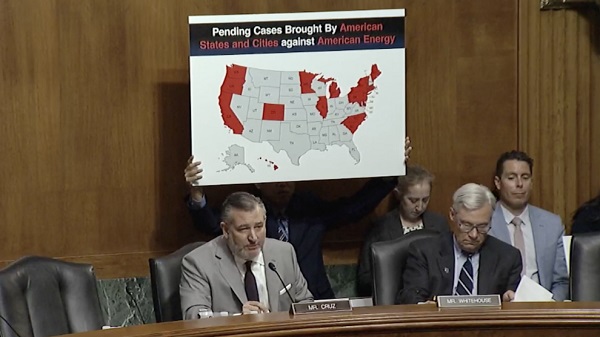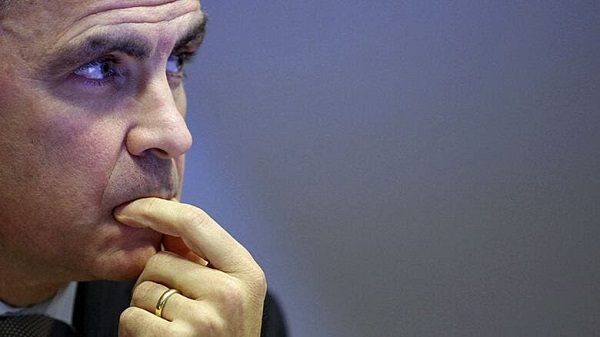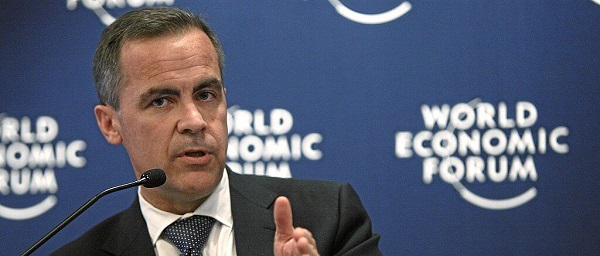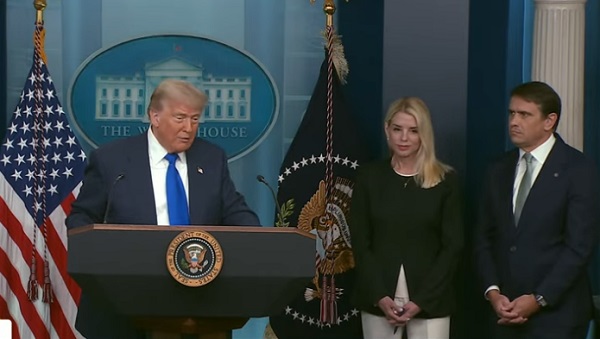Business
The Oracle of Omaha Calls it a Career
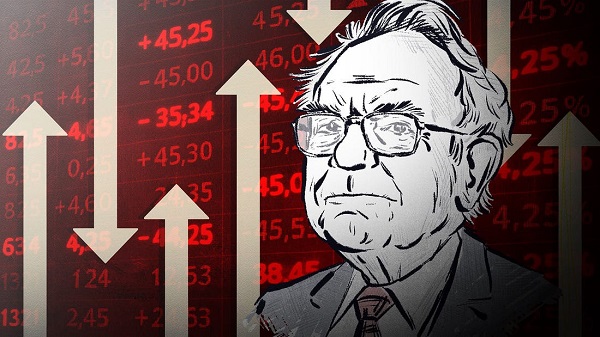
By Eric Salzman
Sometimes even the great ones need to get by with a little help from their friends
Warren Buffett announced this month that he will retire from his position as CEO of Berkshire Hathaway, the fabled corporate conglomerate that made him a revered household name, at the end of 2025. Along with a mostly stellar seven–decade investment career, he carefully created an image of a down to earth midwesterner who lives in a modest home, drives a modest car and dines on Dairy Queen (he liked DQ so much he bought the company in 1997) while swigging Coca Cola (another great Berkshire investment) and dispensing sage advise the way your favorite uncle might.
I have a six degrees of separation story where I sort of crossed paths with him. In fact, I can say that I played a small part in Buffett’s dumping of one of his favorite and most profitable trades, Freddie Mac.
Racket News is supported by readers. Consider becoming a free or paid subscriber.
Up until 2000, Warren Buffett’s Berkshire Hathaway owned a big piece of Freddie Mac (he first purchased Freddie stock in 1988), and it was one of Berkshire’s top performers. Buffett has always loved insurance companies, especially ones that generate lots of float (getting cash that you may or may not have to pay out later). That is what Freddie Mac, along with its “rival” Fannie Mae, had in spades. The government-sponsored enterprises had a duopoly on insuring the credit on trillions of American single and multi-family mortgages.
The events that caused Buffett to sell his entire stake in Freddie Mac took place in 1999, right about the time that I arrived at Freddie Mac as the risk manager of one of its divisions.
In February 1999 I was called into a meeting, a top-secret one! Freddie Mac had been sore forever that it was never able to catch up to its big sister Fannie Mae and get a 50% share of the mortgage insurance business. The split always toggled between 55-45 and 60-40 in Fannie’s favor. Freddie had tried many different schemes to achieve parity, and all had failed. Now it was time to go with the nuclear option, kind of like when the Soviet Union put nukes in Cuba.
Freddie made a deal with mortgage giant Wells Fargo. The bank agreed to let Freddie securitize all Wells Fargo loans for two years.
Freddie was confident the deal would allow it to catch up to Fannie Mae. Freddie was also confident that Fannie Mae would just passively accept it.
My small role in this scheme was to approve a massive new three-month credit risk line for Wells. Honestly, the risk that Wells Fargo would go belly up with no warning in any three-month period wasn’t really an issue, so I said sure and signed off.
In the eyes of Freddie, it was a great deal for both sides. Freddie would capture the elusive market share it desired and Wells would be able to insure loans at a cheaper rate, which meant higher profits.
Freddie also made deals with other banks. Wells got the biggest discount, but all were paying less than they were before to insure loans.
Unfortunately, within about a week, Fannie burst Freddie’s parity fantasy by signing up giants like Countrywide, also for much lower insurance rates, and with that, the race to the bottom of mortgage credit insurance was on! Actually, I would say that this was the first event in what would eventually become the Financial Crisis of 2008.
Warren Buffett took one look at this insanity of a duopoly engaging in a bitter price war and sold his entire stake in Freddie Mac. Interestingly, Berkshire was also a big investor in Wells Fargo, so Buffett got to see both sides of this strategy and chose correctly to go with the recipient of Freddie’s largesse, Wells.
However, my man-crush on Buffett ended in 2008.
One additional trait that many found endearing in Buffett was he could be very candid about his occasional losses and mistakes. He would often use these instances to impart some really great advice. However, the one thing I never heard him discuss was the times he should have lost but got the kind of help regular folks don’t get.
Buffett’s long-time business partner, Charlie Munger, once said “Suck it in and cope, buddy” in response to complaints that the government did more to help Wall Street than homeowners during the 2000’s housing crisis.
The truth is, Buffett, Munger and Berkshire would have had to do a lot of sucking themselves if not for the massive government bailout of the financial system in 2008.
This part of the story started between 2003 and 2004. Berkshire made huge option bets that four major global stock indices — the S&P 500, the Nikkei 225, the Euro Stoxx 50 and the FTSE 100 — would not end up lower than they were at the time of the trade, 10 or 15 years in the future. Berkshire sold these options to major Wall Street banks and in return, the banks paid Berkshire approximately $4.9 billion in what are called premiums. If the stock indices ended lower than their current levels, Berkshire would pay the banks the difference and, if necessary, more than the $4.9 billion it was paid.
In turn, if the indices ended at or higher than current levels, Berkshire would get to keep all the money.
Normally, companies that sell these types of long-term options have to put up collateral. Berkshire did not. With Buffet at the helm, Berkshire was considered riskless. This was the key to the strategy. Berkshire could use the $4.9 billion however it wanted without having to tie up any of Berkshire’s other assets.
As long as nothing went horribly wrong, this was a genius move. Buffett would just do his usual brilliant investing with the funds and even if the stock indices ended somewhat lower when the deals expired a decade or two later, the money he would have to pay on the options would probably pale in comparison to the money he would have made with those billions in premiums he received.
Again, unless something went horribly wrong.
In 2008, global equity markets finally woke up to the fact that the subprime mortgage crisis was a giant asteroid hurtling straight for the global financial system and began to free-fall.
At first it appeared Buffett saw what was happening as a great opportunity. One of his famous folksy quotes after all was:
“A simple rule dictates my buying: Be fearful when others are greedy, and be greedy when others are fearful.”
In September of 2008, with Goldman Sachs taking on water with the rest of their Wall Street brethren, Berkshire invested $5 billion in perpetual preferred stock with Goldman. Berkshire would receive a 10% dividend as well as the right to buy $5 billion of common stock at $115 with a five-year term. On the day of the purchase, September 23, 2008, Goldman’s stock was at $125.05. Perhaps Buffett believed Goldman was already saved after AIG was bailed out the previous week. As long as Goldman survived, this could be one of the best returns Berkshire ever made.
However, despite the immediate bailout measures taken to save Goldman and the rest, the hits just kept coming with big banks like Citigroup, Bank of America, Wachovia and WaMu (which went into receivership two days later) on the ropes.
On October 10, 2008, Goldman Sachs’ stock closed at $88.80, down 29% from where Buffett made his Goldman investment just two weeks prior. Moreover, those options Berkshire sold on the four global stock indices, made a few years earlier were going against Berkshire as global stocks cratered.
Everyone needed a bailout, including Berkshire.
Interestingly, a few years after the crisis, CNBC wrote a piece, replete with the customary Andrew Sorkin boot-licking interview.
In October 2008, in the midst of the financial crisis, Berkshire Hathaway CEO Warren Buffett made a late-night phone call to then-Treasury Secretary Henry “Hank” Paulson, with an idea about how the government might be able to turn the economy around.
Paulson was asleep. He’d had a busy night working through various policy ideas with his team to restore confidence in Wall Street.
At the time, Congress had just passed the Emergency Economic Stabilization Act, or the “bailout bill” as it came to be known, and created a $700 billion Troubled Assets Relief Program to purchase assets of failing banks. But these actions were not enough to calm investors
Once he understood what was going on, Paulson says, he listened as Buffett “laid out an idea which was a germ of what we did.”
What he told Paulson, Buffett recalls, is that, “It might make more sense to put more capital in the banks than it would to try and buy these assets.”
Perhaps the CNBC piece should have been called How Warren Buffett Saved Himself During the Financial Crisis.
Remember, just a few weeks before Buffett’s phone call to Paulson, Buffett had put capital into Goldman and now he was losing his ass. The government putting capital into Goldman and the rest of the major banks, at the time, would save him.
Naturally, in a government bailout led by a former CEO of Goldman Sachs, Hank Paulson, the U.S. never exacted the price it should have for saving Goldman and the rest of the major Wall Street banks. In a fair world, the government bailout would have come with major strings attached.
Instead the government, aided by the Federal Reserve, saved the likes of Goldman and Morgan Stanley by giving them federal bank charters, life-saving capital and bailing out AIG. The bailout recipients then profited handsomely in the aftermath due to the Federal Reserve’s unprecedented emergency policies such as zero interest rate policy and the massive buying of U.S. Treasury securities and agency mortgage-backed securities, which the Federal Reserve kept until 2018.
Those bailed out then thanked the government for saving them by giving them back their capital. Incredibly, a Goldman Sachs story on its website says “…the firm had neither sought nor expected such an infusion of capital from the Treasury.” If you need further proof of how laughable this statement is, check out this email from a Federal Reserve Bank of New York official one day before Goldman was given a bank charter.
Berkshire’s large bets on Goldman and the four major global equity indices were also saved and they also ended up richer after the crisis than before.
Meanwhile, the average American was left to “suck it in,” cope and reflect on how greedy and silly they had been buying homes they couldn’t afford.
Warren Buffett was a brilliant investor and a very wise and interesting man. However, in 2008 the “Oracle of Omaha” moniker did not fit. He was just another guy who didn’t quite see just how big the bomb cyclone was that was coming right at him. He and Berkshire escaped financial ruin like all the other plutocrats by relying on Uncle Sam to come to their rescue.
Racket News is a reader-supported publication. Consider becoming a free or paid subscriber.
Business
National dental program likely more costly than advertised

From the Fraser Institute
By Matthew Lau
At the beginning of June, the Canadian Dental Care Plan expanded to include all eligible adults. To be eligible, you must: not have access to dental insurance, have filed your 2024 tax return in Canada, have an adjusted family net income under $90,000, and be a Canadian resident for tax purposes.
As a result, millions more Canadians will be able to access certain dental services at reduced—or no—out-of-pocket costs, as government shoves the costs onto the backs of taxpayers. The first half of the proposition, accessing services at reduced or no out-of-pocket costs, is always popular; the second half, paying higher taxes, is less so.
A Leger poll conducted in 2022 found 72 per cent of Canadians supported a national dental program for Canadians with family incomes up to $90,000—but when asked whether they would support the program if it’s paid for by an increase in the sales tax, support fell to 42 per cent. The taxpayer burden is considerable; when first announced two years ago, the estimated price tag was $13 billion over five years, and then $4.4 billion ongoing.
Already, there are signs the final cost to taxpayers will far exceed these estimates. Dr. Maneesh Jain, the immediate past-president of the Ontario Dental Association, has pointed out that according to Health Canada the average patient saved more than $850 in out-of-pocket costs in the program’s first year. However, the Trudeau government’s initial projections in the 2023 federal budget amounted to $280 per eligible Canadian per year.
Not all eligible Canadians will necessarily access dental services every year, but the massive gap between $850 and $280 suggests the initial price tag may well have understated taxpayer costs—a habit of the federal government, which over the past decade has routinely spent above its initial projections and consistently revises its spending estimates higher with each fiscal update.
To make matters worse there are also significant administrative costs. According to a story in Canadian Affairs, “Dental associations across Canada are flagging concerns with the plan’s structure and sustainability. They say the Canadian Dental Care Plan imposes significant administrative burdens on dentists, and that the majority of eligible patients are being denied care for complex dental treatments.”
Determining eligibility and coverage is a huge burden. Canadians must first apply through the government portal, then wait weeks for Sun Life (the insurer selected by the federal government) to confirm their eligibility and coverage. Unless dentists refuse to provide treatment until they have that confirmation, they or their staff must sometimes chase down patients after the fact for any co-pay or fees not covered.
Moreover, family income determines coverage eligibility, but even if patients are enrolled in the government program, dentists may not be able to access this information quickly. This leaves dentists in what Dr. Hans Herchen, president of the Alberta Dental Association, describes as the “very awkward spot” of having to verify their patients’ family income.
Dentists must also try to explain the program, which features high rejection rates, to patients. According to Dr. Anita Gartner, president of the British Columbia Dental Association, more than half of applications for complex treatment are rejected without explanation. This reduces trust in the government program.
Finally, the program creates “moral hazard” where people are encouraged to take riskier behaviour because they do not bear the full costs. For example, while we can significantly curtail tooth decay by diligent toothbrushing and flossing, people might be encouraged to neglect these activities if their dental services are paid by taxpayers instead of out-of-pocket. It’s a principle of basic economics that socializing costs will encourage people to incur higher costs than is really appropriate (see Canada’s health-care system).
At a projected ongoing cost of $4.4 billion to taxpayers, the newly expanded national dental program is already not cheap. Alas, not only may the true taxpayer cost be much higher than this initial projection, but like many other government initiatives, the dental program already seems to be more costly than initially advertised.
armed forces
Canada’s Military Can’t Be Fixed With Cash Alone

From the Frontier Centre for Public Policy
By Lt. Gen. (Ret.) Michel Maisonneuve
Canada’s military is broken, and unless Ottawa backs its spending with real reform, we’re just playing politics with national security
Prime Minister Mark Carney’s surprise pledge to meet NATO’s defence spending target is long overdue, but without real reform, leadership and a shift away from bureaucracy and social experimentation, it risks falling short of what the moment demands.
Canada committed in 2014 to spend two per cent of its gross national product on defence—a NATO target meant to ensure collective security and more equitable burden-sharing. We never made it past 1.37 per cent, drawing criticism from allies and, in my view, breaching our obligation. Now, the prime minister says we’ll hit the target by the end of fiscal year 2025-26. That’s welcome news, but it comes with serious challenges.
Reaching the two per cent was always possible. It just required political courage. The announced $9 billion in new defence spending shows intent, and Carney’s remarks about protecting Canadians are encouraging. But the reality is our military readiness is at a breaking point. With global instability rising—including conflicts in Ukraine and the Middle East—Canada’s ability to defend its territory or contribute meaningfully to NATO is under scrutiny. Less than half of our army vehicles, ships and aircraft are currently operational.
I’m told the Treasury Board has already approved the new funds, making this more than just political spin. Much of the money appears to be going where it’s most needed: personnel. Pay and benefit increases for serving members should help with retention, and bonuses for re-enlistment are reportedly being considered. Recruiting and civilian staffing will also get a boost, though I question adding more to an already bloated public service. Reserves and cadet programs weren’t mentioned but they also need attention.
Equipment upgrades are just as urgent. A new procurement agency is planned, overseen by a secretary of state—hopefully with members in uniform involved. In the meantime, accelerating existing projects is a good way to ensure the money flows quickly. Restocking ammunition is a priority. Buying Canadian and diversifying suppliers makes sense. The Business Council of Canada has signalled its support for a national defence industrial strategy. That’s encouraging, but none of it will matter without follow-through.
Infrastructure is also in dire shape. Bases, housing, training facilities and armouries are in disrepair. Rebuilding these will not only help operations but also improve recruitment and retention. So will improved training, including more sea days, flying hours and field operations.
All of this looks promising on paper, but if the Department of National Defence can’t spend funds effectively, it won’t matter. Around $1 billion a year typically lapses due to missing project staff and excessive bureaucracy. As one colleague warned, “implementation [of the program] … must occur as a whole-of-government activity, with trust-based partnerships across industry and academe, or else it will fail.”
The defence budget also remains discretionary. Unlike health transfers or old age security, which are legally entrenched, defence funding can be cut at will. That creates instability for military suppliers and risks turning long-term procurement into a political football. The new funds must be protected from short-term fiscal pressure and partisan meddling.
One more concern: culture. If Canada is serious about rebuilding its military, we must move past performative diversity policies and return to a warrior ethos. That means recruiting the best men and women based on merit, instilling discipline and honour, and giving them the tools to fight and, if necessary, make the ultimate sacrifice. The military must reflect Canadian values, but it is not a place for social experimentation or reduced standards.
Finally, the announcement came without a federal budget or fiscal roadmap. Canada’s deficits continue to grow. Taxpayers deserve transparency. What trade-offs will be required to fund this? If this plan is just a last-minute attempt to appease U.S. President Donald Trump ahead of the G7 or our NATO allies at next month’s summit, it won’t stand the test of time.
Canada has the resources, talent and standing to be a serious middle power. But only action—not announcements—will prove whether we truly intend to be one.
The NATO summit is over, and Canada was barely at the table. With global threats rising, Lt. Gen. (Ret.) Michel Maisonneuve joins David Leis to ask: How do we rebuild our national defence—and why does it matter to every Canadian? Because this isn’t just about security. It’s about our economy, our identity, and whether Canada remains sovereign—or becomes the 51st state.
Michel Maisonneuve is a retired lieutenant-general who served 45 years in uniform. He is a senior fellow at the Frontier Centre for Public Policy and author of In Defence of Canada: Reflections of a Patriot (2024).
-

 Bruce Dowbiggin2 days ago
Bruce Dowbiggin2 days agoCanada Day 2025: It’s Time For Boomers To Let The Kids Lead
-

 Alberta22 hours ago
Alberta22 hours agoCOVID mandates protester in Canada released on bail after over 2 years in jail
-
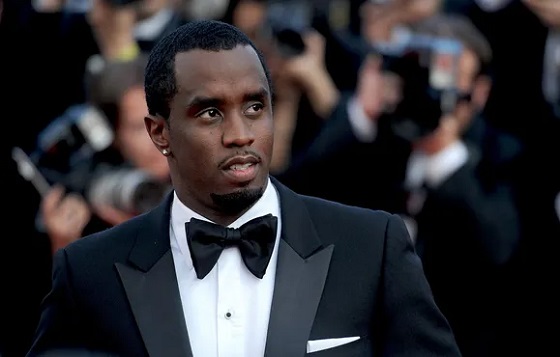
 MxM News2 days ago
MxM News2 days agoDiddy found not guilty of trafficking, faces prison on lesser charge
-

 armed forces18 hours ago
armed forces18 hours agoCanada’s Military Can’t Be Fixed With Cash Alone
-

 Agriculture2 days ago
Agriculture2 days agoCanada’s supply management system is failing consumers
-

 International21 hours ago
International21 hours agoTrump transportation secretary tells governors to remove ‘rainbow crosswalks’
-
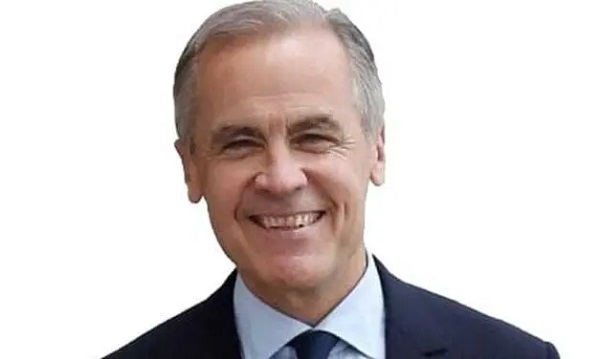
 Business21 hours ago
Business21 hours agoCarney’s spending makes Trudeau look like a cheapskate
-

 Alberta2 days ago
Alberta2 days agoAlberta government records $8.3 billion surplus—but the good times may soon end




